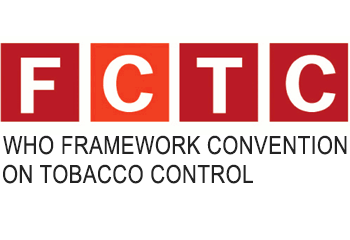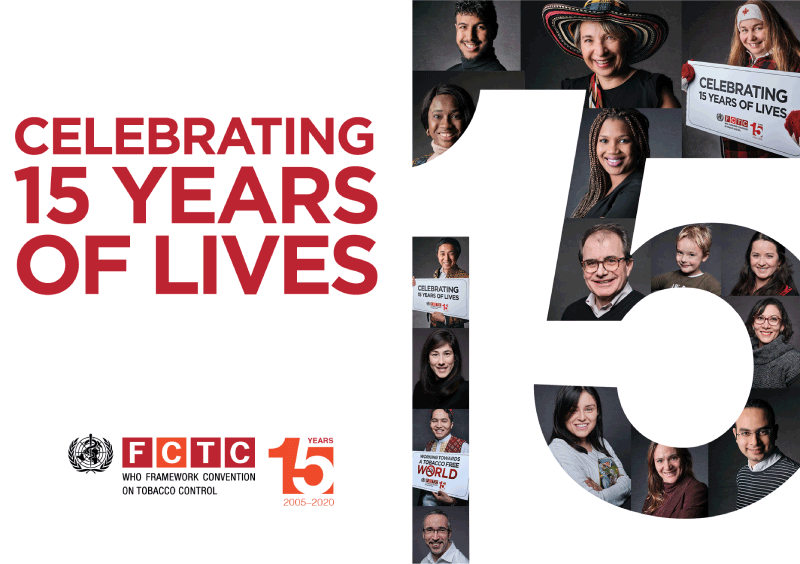The WHO FCTC

The WHO Framework Convention on Tobacco Control (WHO FCTC) is the most powerful tool available to counter tobacco’s negative impacts. Some 180 countries are Parties to the WHO FCTC, including 19 out of the 22 countries in the Eastern Mediterranean Region. This demonstrates national commitments to implement tobacco control policies and, in doing so, save lives. Implementing the provisions of this legally-binding, evidence-based treaty can also help governments meet the target of a 30% reduction in current tobacco use by 2025.
The WHO FCTC contains measures to reduce the demand for tobacco as well as others to reduce tobacco production, distribution, availability and supply. The Protocol to Eliminate Illicit Trade in Tobacco Products to the WHO FCTC is the key policy tool to reduce tobacco use and its health and economic consequences. The objective of the Protocol is to eliminate all forms of illicit trade in tobacco products, in accordance with the terms of Article 15 of the WHO FCTC.
WHO FCTC: 15 years of protecting and saving lives
27 February 2020
Measures to reduce the demand for tobacco
Measures to reduce the demand for tobacco are effective at reducing the disease and death associated with tobacco. Such measures include price and tax increases, advertising and promotion bans, and smoking restrictions. In particular, tax increases represent a phenomenal return on investment. Increasing tobacco taxes results in an increase in the sales price of tobacco products, and prohibiting or restricting sales of tax- and duty-free tobacco products. Governments collect nearly US$270 billion in tobacco excise tax revenues each year. This could increase by over 50%, generating an additional US$ 141 billion, simply from raising taxes on cigarettes by just US$0.80 per pack (equivalent to one international dollar) in all countries.
Price and tax measures to reduce the demand for tobacco
Article 6 of the WHO FCTC
Protection from exposure to tobacco smoke
Article 8 of the WHO FCTC
Regulation of the contents and disclosure of tobacco products
Article 9 of the WHO FCTC
Packaging and labelling of tobacco products
Article 11 of the WHO FCTC
Education, communication, training and public awareness
Article 12 of the WHO FCTC
Tobacco advertising, promotion and sponsorship
Article 13 of the WHO FCTC
Demand reduction measures concerning tobacco dependence and cessation
Article 14 of the WHO FCTC
Measure to reduce the supply of tobacco
Measures exist to also control tobacco supply. The Protocol to Eliminate Illicit Trade in Tobacco Products to the WHO FCTC is the key policy tool to reduce tobacco use and its health and economic consequences. Smuggling controls are an essential complement to measures to reduce the demand for tobacco, preventing international smugglers from circumventing tobacco price increases. Other measures, such as supporting viable alternatives to tobacco production, and restricting access of children and youth to tobacco products, are effective, especially as part of a comprehensive strategy to reduce tobacco use.
Illicit trade in tobacco products
Article 15 of the WHO FCTC
Article 16 of the WHO FCTC
Provision of support for economically viable alternative activities
Article 17 of the WHO FCTC
The Protocol to Eliminate Illicit Trade in Tobacco Products
The Protocol to Eliminate Illicit Trade in Tobacco Products to the WHO FCTC is the key policy tool to reduce tobacco use and its health and economic consequences. Illicit trade increases the accessibility and affordability of tobacco products, thus fueling the tobacco epidemic and undermining tobacco control policies. It also causes substantial losses in government revenues, and at the same time contributes to the funding of transnational criminal activities.
The objective of the Protocol is to eliminate all forms of illicit trade in tobacco products, in accordance with the terms of Article 15 of the WHO FCTC, which addresses means of countering illicit trade in tobacco products, a key aspect of a comprehensive tobacco control policy.



